SHAH ALAM: At the recent Singapore Airshow 2016, Finmeccanica announced that it had secured a contract to provide radar warning receiver (RWR) to the Indonesian Air Force. The contract requires the company to install the SEER RWR on the BAE Systems Mk 209 Hawk of the Indonesian Air Force. It also includes an option to supply additional systems in the future.
Back in 2010, it was widely reported that Finmeccanica (then known as Selex Galileo) had expected to receive a contract to equip RMAF Hawks, both the 108s and 208s, with a new radar warning receiver (RWR) system, the SEER.

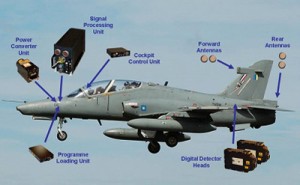
It was the same RWR as the Indonesian AF contract, which Finmeccanica described as the self-protection equipment that had been designed as a drop-in replacement for BAE’s Sky Guardian 200 RWR system, previously installed on platforms including the Hawk.

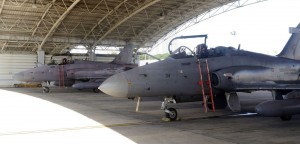
According to the release, the company was confident as getting the contract as it had supported flight trials of the new equipment (in 2010) with a Malaysian Hawk. “The RWR met all of the jointly agreed objectives, with Seer being able to detect radars at ranges that were an order of magnitude greater than those achieved by older-generation systems,” the company said at the time.
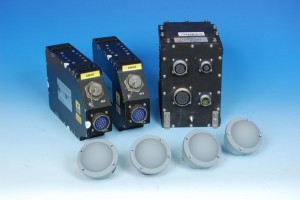
Comprising four wide band spiral antennas, two digital detectors, a signal processor and a cockpit display, Seer is “capable of identifying and prioritising complex RF signals in a hostile threat environment”, it added.
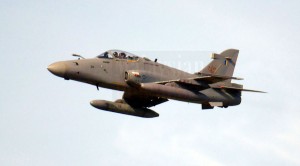
Fast forward to 2016, we know that the Hawk upgrade was not funded in RMK10 and even in RMK11, funding for the programme remained uncertain. By coincidence (ahead of the Finmeccanica announcement of the Indonesian AF contract) at the Singapore Airshow , I spent part of the day talking with industry sources on the Hawk upgrades. Once the announcement was made I knew I had my story already.
Those I spoke to at the airshow were optimistic that the RMAF own Hawk upgrades will be signed at DSA 2016 in April but cautioned the recent economic headwinds may well scuttled the deal – yet again. By all accounts the upgrades planned are limited mostly involving the cockpit displays, HUDs (of course the mission computers will be changed as part of the upgrades) and the RWR.
It was the same solution that went unfunded in RMK10 so in the current fiscally challenging situation the same thing could repeated. However as the Hawks especially the 208s are currently heavily involved in the operations to ensure the security of Sabah, the bean counters may well be persuaded to release the funds needed for the upgrade programme. Unfortunately, it may well be limited to the 208s only and not across the whole fleet as planned originally.
As had been reported before, RMAF is planning to base a Hawk squadron in Sabah as part of the plan to boost the security of Sabah following the Lahad Datu incursion. At least six Hawks are now based at Labuan airbase together with the occasional rotation of Hornets and Sukhoi squadrons.
Anyhow even with the limited upgrades, the 208s according to industry sources will get a much needed boost in capability similar to the latest generation Hawks. The upgrades will allow the 208s to carry and fire the new Aim-9X Sidewinders (ordered already) or ASRAAM (not ordered).
Apart from air-to-air weapons, the upgraded 208s will also be cleared to carry targeting pods to guide bombs, rockets and missiles like the Brimstone. Of course the guided ordnance could also be “buddy lased” by soldiers on the ground or another aircraft equipped with a targeting pod.
Unfortunately, unlike the cockpit and RWR upgrades – which had been done by others – replacing the APG-66H radar on 208s will be more problematic. This according to an industry source was due the small nose of the Hawk which will need a specialised solution for an upgrade and could incur higher costs.
The H version has a smaller antenna compared to the radar which was the standard on the F-16A.
Anyhow there is no need to fund the upgrades for the Hawks if we were to buy the Typhoon as I had posted recently. It will be done FOC.
— Malaysian Defence
If you like this post, buy me an espresso. Paypal Payment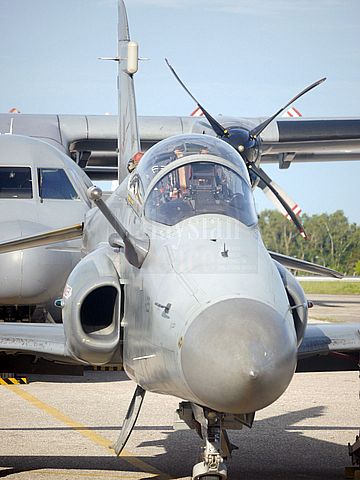
View Comments (44)
For Rmk11 we still have no clue of how much budget there is for tudm capex
Some of the things that is chasing for tudm fund in Rmk11
1) hercules upgrades
2) nuri upgrades
3) hawk upgrades
4) mrca
5) ground radar upgrades
6) SAR/maritime patrol capability
The biggest question if we were to buy the typhoon is... How much would it cost? Oman bought 12 typhoons plus 8 hawks for usd 4 billion. In a few days we would know Kuwait's contract for new typhoons. Dassault is asking india usd 13 billion for 36 fly away rafales. To compare, we got our 18 su-30mkm for only usd 900 million.
If say tudm do have a usd 4 billion allocation for Rmk11
1) nuri upgrades (3x16) usd 48 million
2) hercules upgrades. Sell off 3 old long fuselage hercules for usd 120 million. Use the money for hercules upgrades, plus buy the 1 short fuselage hercules at airod. That plus another tudm short fuselage hercules to be equipped for SAR/CSAR capability, with FLIR, air refuelling probe, satcom etc etc. So tudm hercules fleet would consist of 2x sar/csar capable hercules, 4x kc-130 tankers and 6x c-130h-30 long fuselage hercules.
3) AEW&C and maritime patrol capability. Buy saab bombardier global 6000 based platforms. We already have 1 VIP bombardier so we have the experience of flying that platform. 2x saab erieye-ng AEW&C (without the complicated globaleye system) plus 6x saab swordfish mpa. (350x2 + 100x6) usd 1.3 billion. Having AEW&C and mpa systems would greatly enhance tudm current fighters capability and also tldm future gowind fleet.
4) mrca. Lower the expectation and get a light fighter for now. Medium mrca could be deferred to rmk12 (2020-2025). 24 fa-50 plus 16 ta-50 could be had for usd 1.3 billion to equip 3 squadrons. Use the hawks as is (concentrate all in 1 sqn) and replace with medium MRCA in rmk12
5) hornets. Ask Australia for 4 f/a-18b (out of 16 remaining) two seaters. Now they are preparing to retire the hornets their new pilot training would not be as busy as previous. This would enable tudm hornet fleet to increase to 12. Further additional hornets could be done in rmk12.
6) ground based radars. Allocate usd 600 million to upgrade/get new radars.
7) su-30mkm minor upgrades. Software upgrades to the damocles pod, bars radar, sap-518 pod. New HMS (I like the scorpion hmd), satcom capability (for data/communication during long range strike/patrol). 1 or 2 recce pod (thales?) to replace rf-5e capability. 4-6 additional used MKI converted to MKM to enable airframes to rotate for maintenance. Used buy to circumvent the current sensitivity with Russia. India can replace those sold with new build mki (add to proposed additional 40 mki buy). Budget usd 450 million for the flanker exercise.
Total spend around usd 3.7 billion. More capability to defend malaysian sovereignty for less than a proposed typhoon/rafale buy.
I have sense that we might get 2nd hand tyhoon T2...
Typhoon...its just not possible. No dinero.
Hornets that would be my choice.
Its not easy to get second hand typhoons. This is because the brits are planning to use the tranche 1 planes for their air defence requirements n others are not selling now
Germany, Italy and Spain all has offered to offload their tranche 1 typhooms to various countries. It was offered for around usd 35 million each.
The problem is, it is a very difficult aircraft to further upgrade (unless eurofighter is bluffing, wanting customers to buy tranche 3 typhoons instead of upgrading their tranche 1. All those issues having to extensively modify the airframe to accommodate aesa radar is just not there on other aircraft like the f-16 and f/a-18.)
If you are content with the tranche 1 specs till the end of its useful lives, then fine. But in a few years time upgraded f-16 (f-16v), f/a-18 would have aesa, upgraded cockpits, etc etc, then would you be comfortable flying in the tranche 1 typhoons?
At this juncture, IMHO what ever air combat assets we have would be sufficient for patrolling and deterrent purposes though not adequate if there is a high intensity conflict should occur.
I mean the SU30 annd Hornet D (26 in numbers) would be sufficient as deterrent purposes. The MIG 29 (status unclear, 10 in numbers) and the 13 Hawk 200 could still be used for low intensity operations. If ever high intensity conflict occurs, we cab be rest assured (for nowla) Uncle SAM and the Royal Navy will get involve.
I think for air assets the focus should be for more ISR platforms that we are severely lacking such as MPA, ASW Heli,long range drones and to a lesser extent AEWACS.
For long range drones, something like the sagem patroller would be something tudm could afford.
A system consisting of 3 uavs and 1 ground station would cost around usd 35million. A squadron of 4 systems would cost about usd 140 million.
Each system would enable 1 continuous 24h orbit (that means 1 uav to always be on the air) to be set up. Each patroller uav has an endurance of 30h. So a squadron could fly 4 ISR orbits continuously (1 in esscom, 2 in spratlys/sarawak shoals, 1 supporting other missions). The patroller uav, along with other assets such as the smaller scaneagle uav, swordfish mpa, AEW&C, police beechcraft ISR and others to create a credible ISR capability for malaysia.
Reply
The figure you quoted US$140 million will be correct only if we buy direct not through a local agent which is almost certainly the way its going to be.
....... - ''su-30mkm minor upgrades''
Not upgrades to Damocles but a replacement. In view of it's limitations as a pod, work on a replacement for Damocles started a few years ago to meet a French air force requirement. From what I've heard; our MKMs lack a Health Monitoring System and according to another source, there were plans for a towed decoy. Off course the biggest upgrade we can do - apart from replacing Bars with an AESA - is to fit both the MKMs and Hornets with a common data link.
Kamal - ''I mean the SU30 annd Hornet D (26 in numbers) would be sufficient as deterrent purposes.''
The RMAF has to ensure that it has aircraft to maintain a permanent 24 hour QRA, have others available for training and others available for unexpected contingencies - very tough given the numbers we have and taking into account that at any one time 'X' number of Hornets and MKMs will be undergoing squadron or depot level maintenance.
Marhalim,
Given that the Hawks have enough air frame life for at least 7-8 years of service and that BAE Systems will continue support the Hawk 100/200 series for the foreseeable future; the obvious question is for how long more will Northrop Grumman continue to support the APG-66H?
Reply
I believe NG has stopped supporting the APG-66/68 series for sometime now. The support is coming from several companies from the US. That is the reason I brought up the cost of getting a new radar for the Hawks.